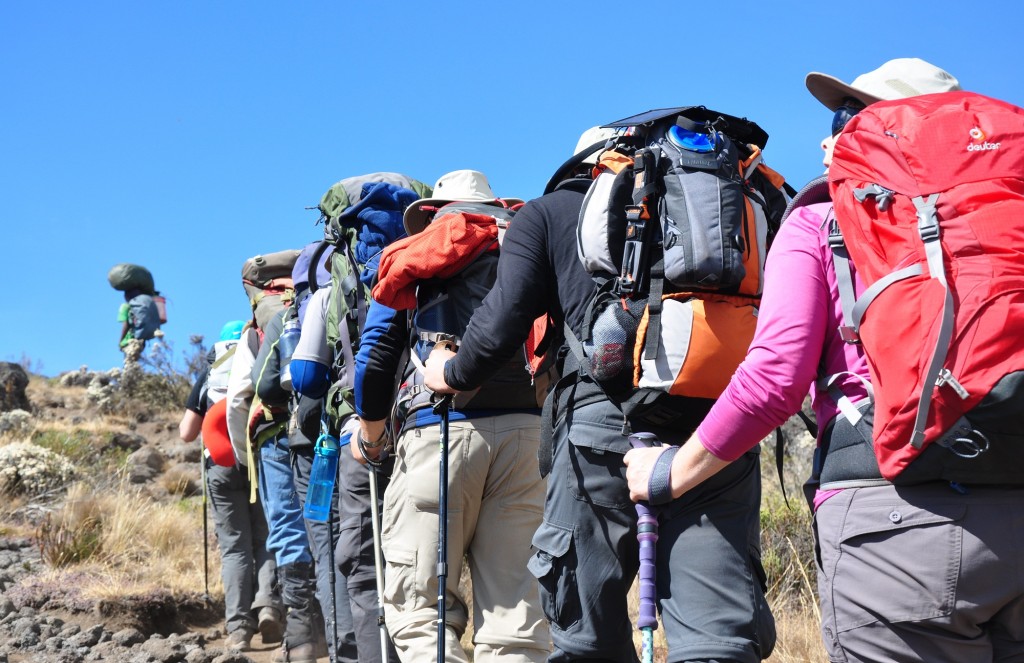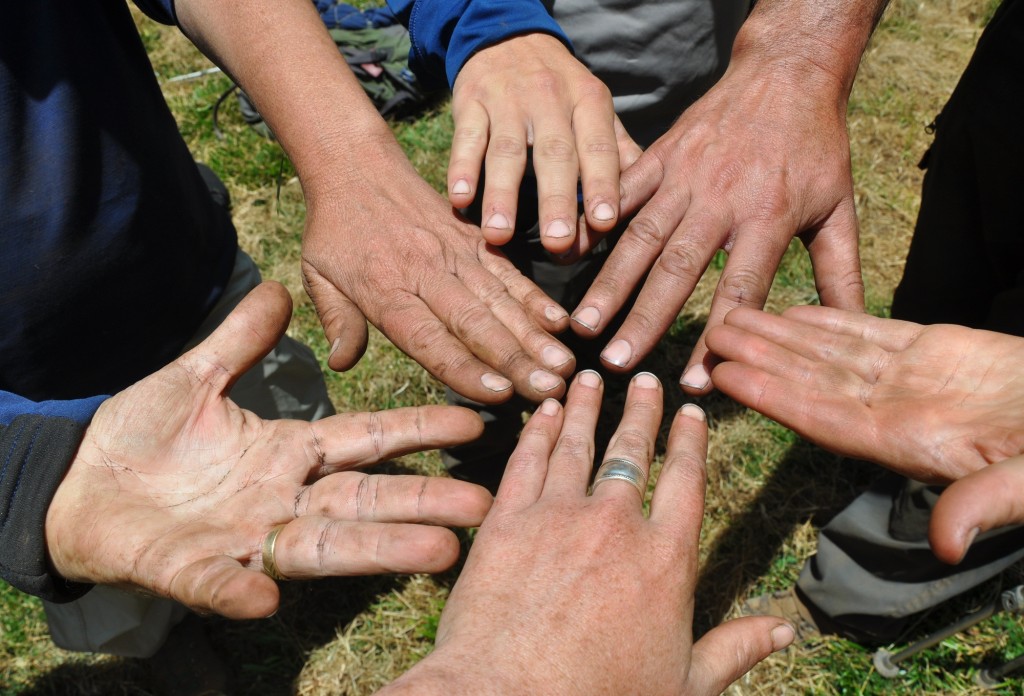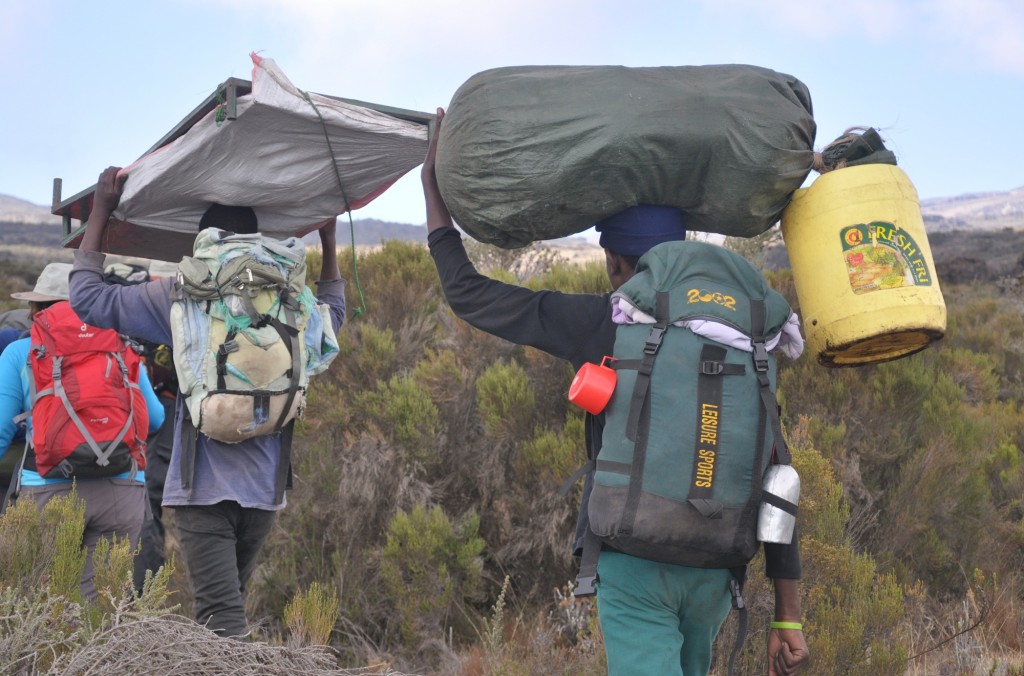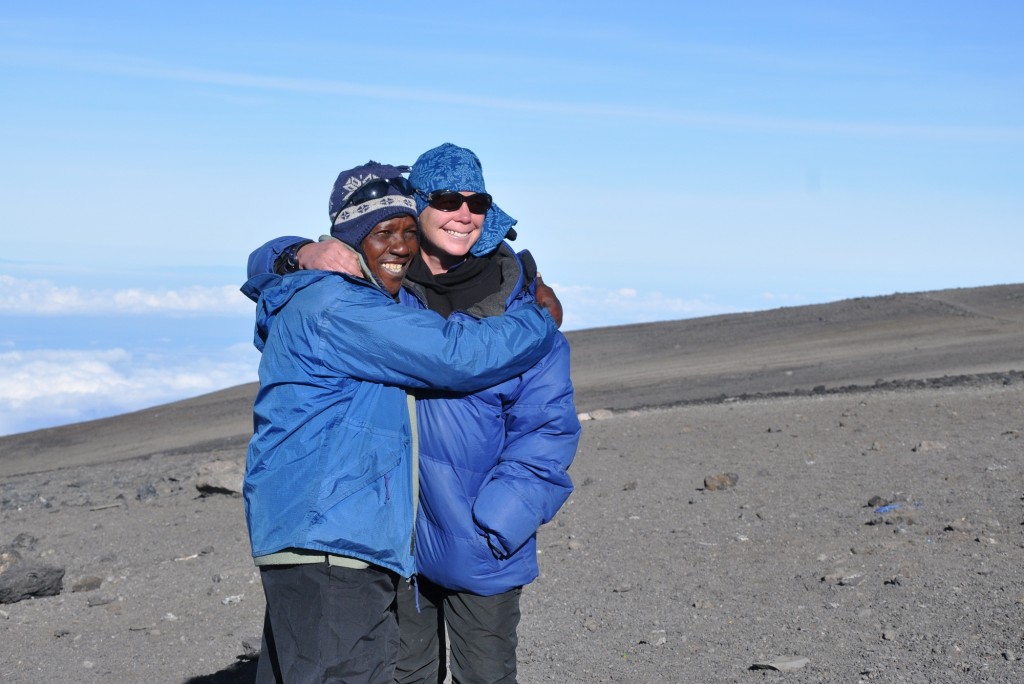Recently I accompanied several employees of corporate supporter Elanco as they climbed Mt. Kilimanjaro and raised money for Heifer International. The trek was challenging and magnificent. Here are a few things that other sources may not tell you about climbing Kilimanjaro.
1. It’s not the climbing, it’s the altitude. So walk verrry sloooowly.
When someone asks if Kilimanjaro was hard, I don’t know what to say. Because, while walking up a rocky path for hours each day isn’t easy, the routes were not very difficult and the segments not long - until the summit day. My lungs complained much sooner than my legs did. No, the tough part was re-learning my body’s capabilities at altitude.
Normally, when I hike, I move at a good clip. So I was startled, within the first few minutes of the trek, to be told to follow behind the guide at a pace that I wouldn’t use for window-shopping at the mall. But as the days go on and I heard my breathing deepening, I became comfortable with going slowly. By the day of the summit attempt, I was grateful to climb at a speed that could be surpassed by my 85-year-old grandmother pulling a sledge of iron ore.
Many nights on the mountain, I slept in a sleeping bag with liner, and long underwear, pants, fleeces, a jacket, and ski socks. And a stocking cap. And foot warmers. I lost all memory of what it might mean to be warm. On the morning of the summit, the water in our Camelbak tubes froze during the walk, and my toes went bitingly numb. Cameras often freeze up at the top. Afterward, the skin on my hands and windburned face became dry and tough.
3. And dirty.

In this weather, I didn’t mind not bathing for seven days. But I would’ve liked to get the grit out of my teeth. At the end of the dry season, when we climbed, the dust from the trail and campsites creeped into everything. Washing our hands twice a day was a lovely experience - until we grasped the zipper to enter a tent, and they were filthy once again. Applying sunscreen became, at some point, just an exercise in smearing dirt over your face.
4. You have to pee a lot.
To fight altitude sickness, it’s necessary to drink about three liters of water while climbing, in addition to plenty of hot teas and soups at every meal. This means that nearly every hour, like an anxious spaniel, I needed to rush behind a bush or rock to answer nature’s call. I thought a person would only experience this sort of inconvenience in pregnancy, but I was wrong.
5. You need a lot of help.

So much for personal achievement. It took legions of guides and porters to get me and my companions to the top of the mountain. Honestly, it probably would’ve been faster for them to physically carry us to the peak, rather than tote our tents, clothes, food and cooking apparatus for seven days. The crew also taught us all sorts of useful Swahili terms, made sure we were stuffed with delicious food at every chance, and generally reassured and encouraged us the entire way.
In addition, we climbers had to look out for each other, obliterating our sense of adult independence. No one had brought absolutely everything they needed - with the possible exception of James, a well-supplied Yukon native. So we borrowed and traded each others’ gloves, pain killers, water filters, tissue and hand warmers.
6. You have the company of a lot of other foreigners.
This is no isolated excursion. Mt. Kilimanjaro is a top destination worldwide, so along with plenty of Americans, you’ll share campsites with Germans, Spaniards and Japanese - but not a lot of Africans. Kilimanjaro, because of the resources needed for the trek, is out of reach for most Africans, particularly those in its destitute home country of Tanzania.
7. The true experience is found in the days leading up to the summit attempt.

Guess what? If there's meaning in climbing Kilimanjaro, it's not found at the summit. The entire six-day climb is actually a learning experience. The climb is a training exercise in patience and perseverance. More surprisingly, we found richness in the experience of being guests in Tanzania. We didn't expect to be taught so much from our local guides, but their kind tutelage shaped every aspect of our journey. Our eyes were opened, and we learned a new kind of empathy from all of our interactions. The climbers came home with new ambition - not for climbing, but for opening decent opportunities to people from every place and background.